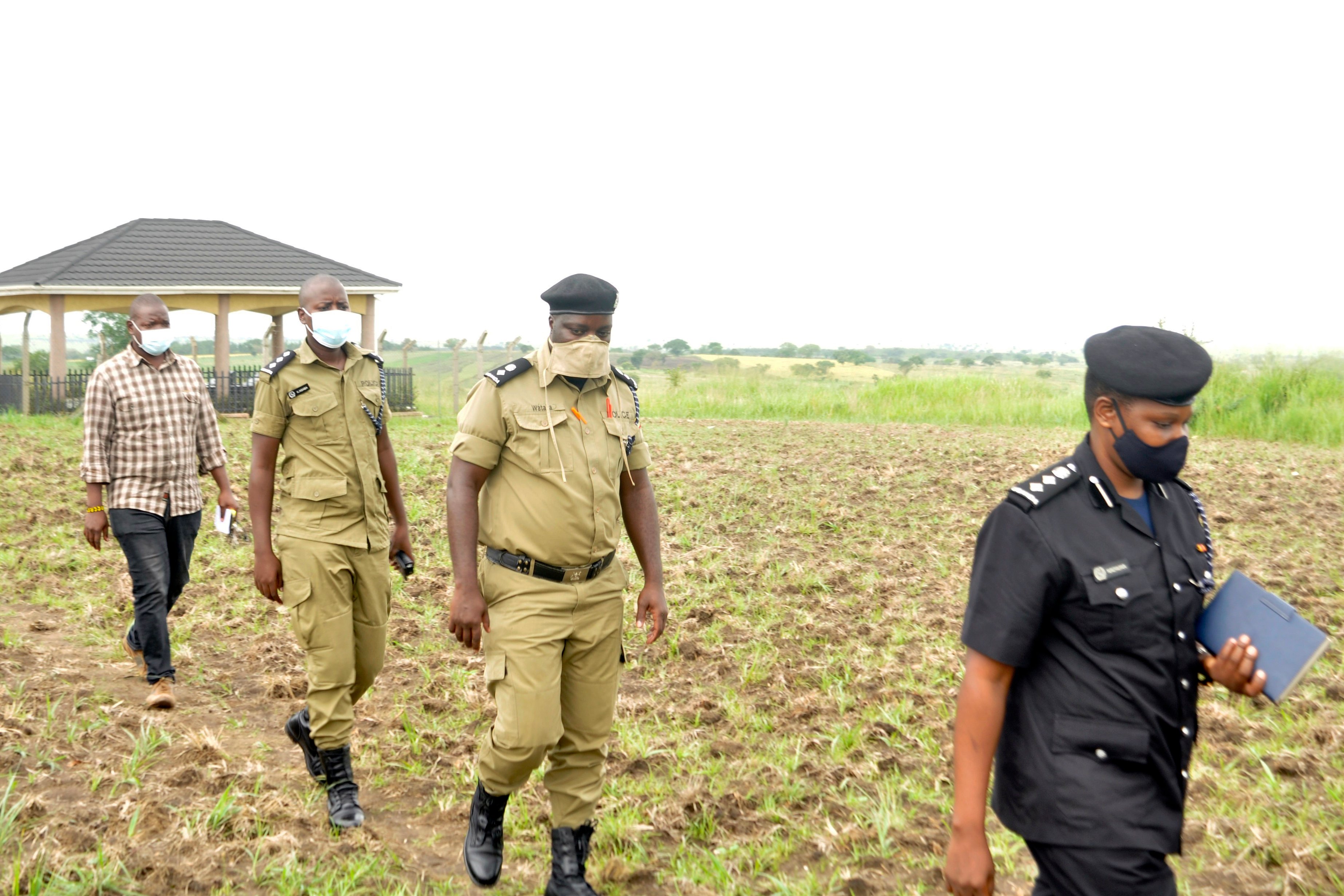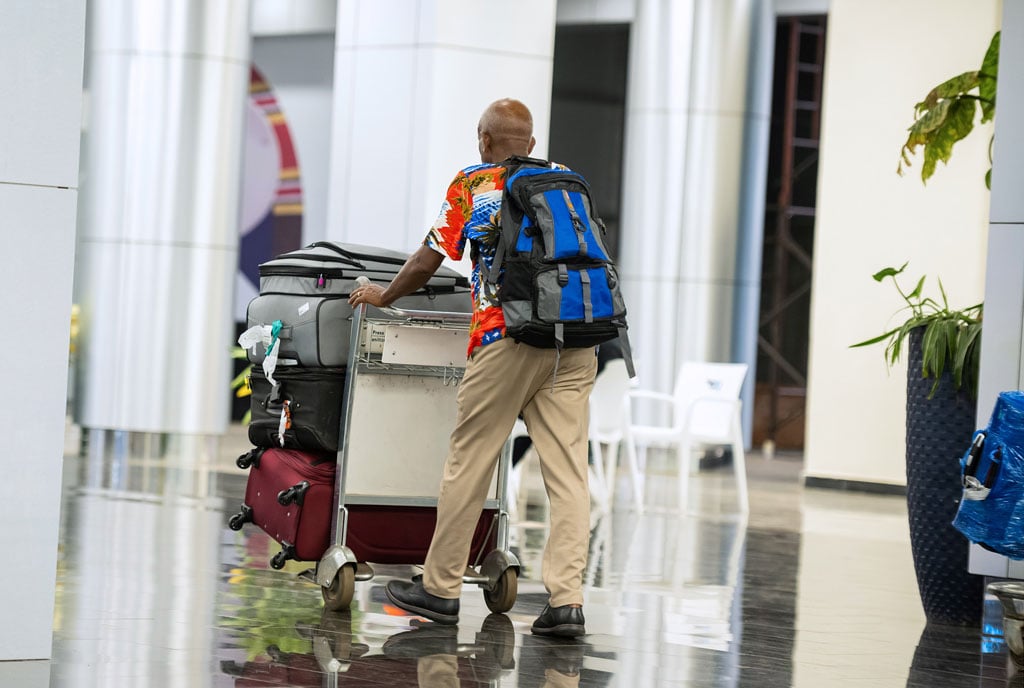70% of arable land in northern Uganda remain idle

Ms Damalie Nachuha (right), the Aswa region police commander, leads a team of senior police officers to inspect a disputed land in Purongo Sub-county Nwoya District on June 19, 2021. There are several land wrangles in Acholi Sub-region. PHOTO/TOBBIAS JOLLY OWINY
What you need to know:
- The Ministry of Finance launched a semi-annual Zonal Analytic and Policy Advisory (ZAPA) initiative to support sub-regional planning for economic transformation, focusing on policy and service delivery matters that promote inclusive growth.
Up to 70 percent of arable land in northern Uganda remains unused, an official from the Ministry of Finance has revealed.
Ms Bridget Nimungu, an economist in the Policy Development and Research Department of the Ministry of Finance, Planning, and Economic Development, said on Monday that only 30 percent of the land in the Lango and Acholi sub-regions is currently utilised. These sub-regions together cover 28,522 square kilometres.
Speaking during the Zonal Analytics and Policy Advisory Updates presentation for the Acholi Sub-region at the Regional Local Government Budget Consultative Workshop for FY 2025/2026 in Gulu City, Ms Nimungu said 78 percent of the region's 2.04 million people still rely on a subsistence economy.
“Less than 30 percent of land in Acholi is under cultivation, which is quite low compared to the average landholding size. Most of the population remains in a subsistence economy, leading to minimal productive land use,” she said.
Ms Nimungu attributed this underutilisation to communal land ownership and adverse climate conditions.
“The communal land tenure system is not secure enough to encourage productive land use, which impacts overall production and productivity. Additionally, relying on rain-fed agriculture is a challenge. Irrigation and fertiliser use remain minimal,” she noted.
She added that the government aims to grow the economy tenfold, from $50 billion (about Shs183 trillion) to $500 billion (about Shs1.8 quadrillion), within the next 15 years. To address the idle land issue, Ms Nimungu emphasised the need for agro-industrialisation and commercial agriculture.
Last year, the Ministry of Finance launched a semi-annual Zonal Analytic and Policy Advisory (ZAPA) initiative to support sub-regional planning for economic transformation, focusing on policy and service delivery matters that promote inclusive growth.
In the past three years, the government has introduced several initiatives aimed at fostering growth in northern Uganda, including the Uganda Women Entrepreneurship Programme (UWEP), Youth Livelihood Fund (YLP), Social Assistance Grants for Empowerment (SAGE), and Emyooga.
Other projects, such as the National Oil Seed Project, a cotton seed processing plant in Pajule, and the Programme for the Restoration of Livelihoods in Northern Uganda (PRELNOR), also aim to spur development in the region.
Despite these efforts, the region continues to face significant challenges, including a strong correlation between subsistence farming and poverty, food insecurity, and a slow pace of industrialisation.
These issues are compounded by insufficient modern agricultural practices, high production costs, inadequate infrastructure, a high dependency ratio, and poor land management.
Ms Linda Agnes Auma, the chairperson of the Parliamentary Committee on Agriculture, criticised the government's approach, arguing that it has overlooked priority crops that could boost land use.
"The government should not expect a region recovering from war to progress at the same pace as the rest of the country. To revamp the region, we need to focus on high-value perennial crops,” she said.
“Crops like coffee and avocado, which are already showing positive signs, should be prioritised over crops like soya and sunflower," she added.
Last year, local governments in northern Uganda raised concerns during the Regional Budget Consultative Conference for FY 2024/2025, particularly regarding delays in reallocating unspent funds for the Uganda Intergovernmental Fiscal Transfer (UGIFT) and the Uganda Support to Municipal Infrastructure Development (USMID) programmes.
Finance Minister Matia Kasaija acknowledged the challenges, citing budget constraints as the reason for the government's inability to meet certain needs, such as transportation and welfare services.
However, he announced a supplementary budget of Shs129 billion, with Shs116 billion allocated to UGIFT and Shs13 billion to USMID.
The USMID project ended in June 2024, while UGIFT will conclude in December 2025, following an 18-month extension.
The Fourth National Development Plan (NDP IV), set to begin in FY 2025/26, aims to grow Uganda’s economy from $50 billion (about Shs183 trillion) to $500 billion (about Shs1.8 quadrillion) by 2040, with a focus on agricultural production, value addition, and unlocking potential in tourism and the mineral sector.
“You should formalise value-chain umbrella associations in rural and peri-urban areas, establish trade arrangements between vendor associations and Parish Development Model (PDM) enterprise groups, and develop farm registers to promote agro-tourism with support from the Uganda Tourism Board,” Mr Kasaija advised.




